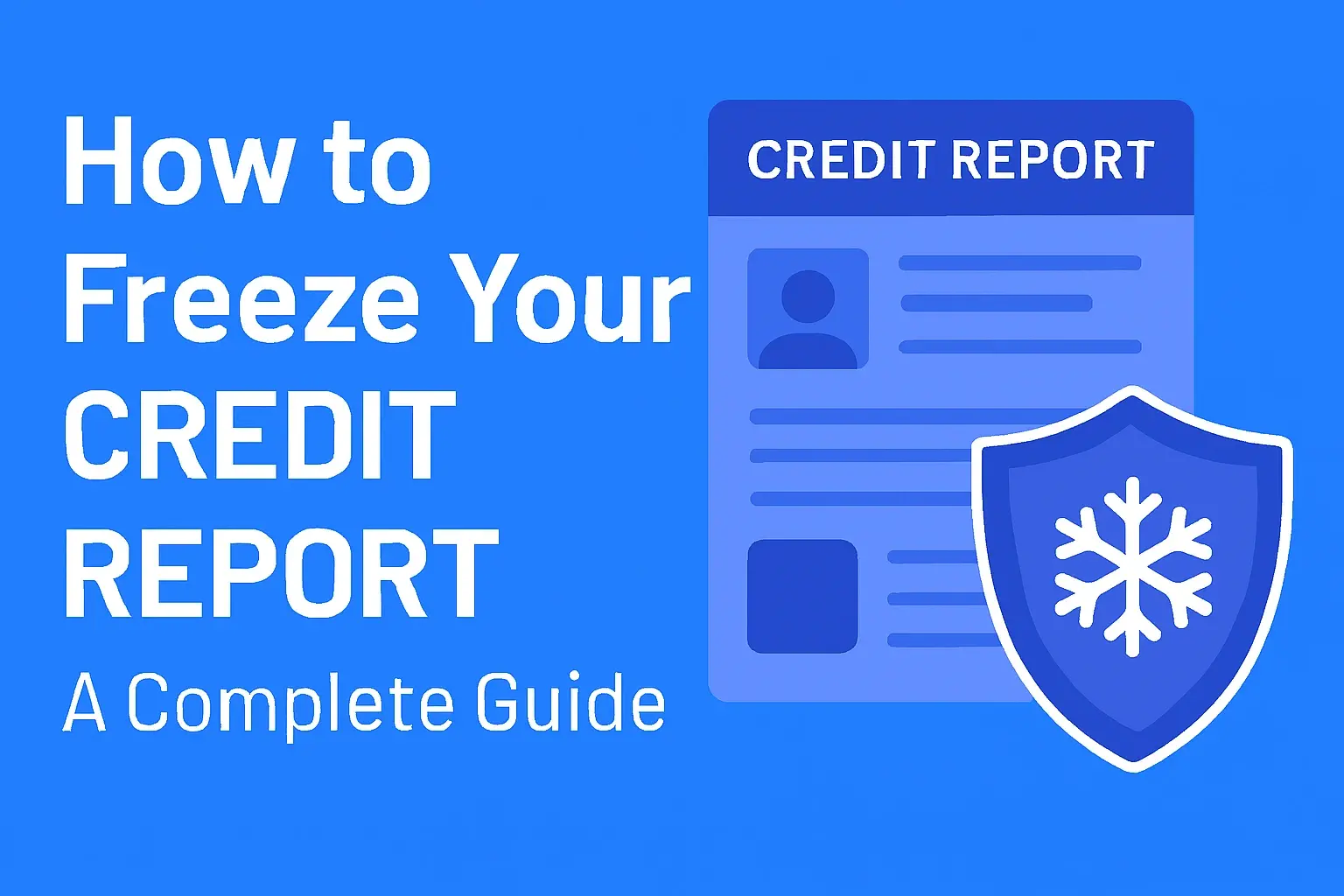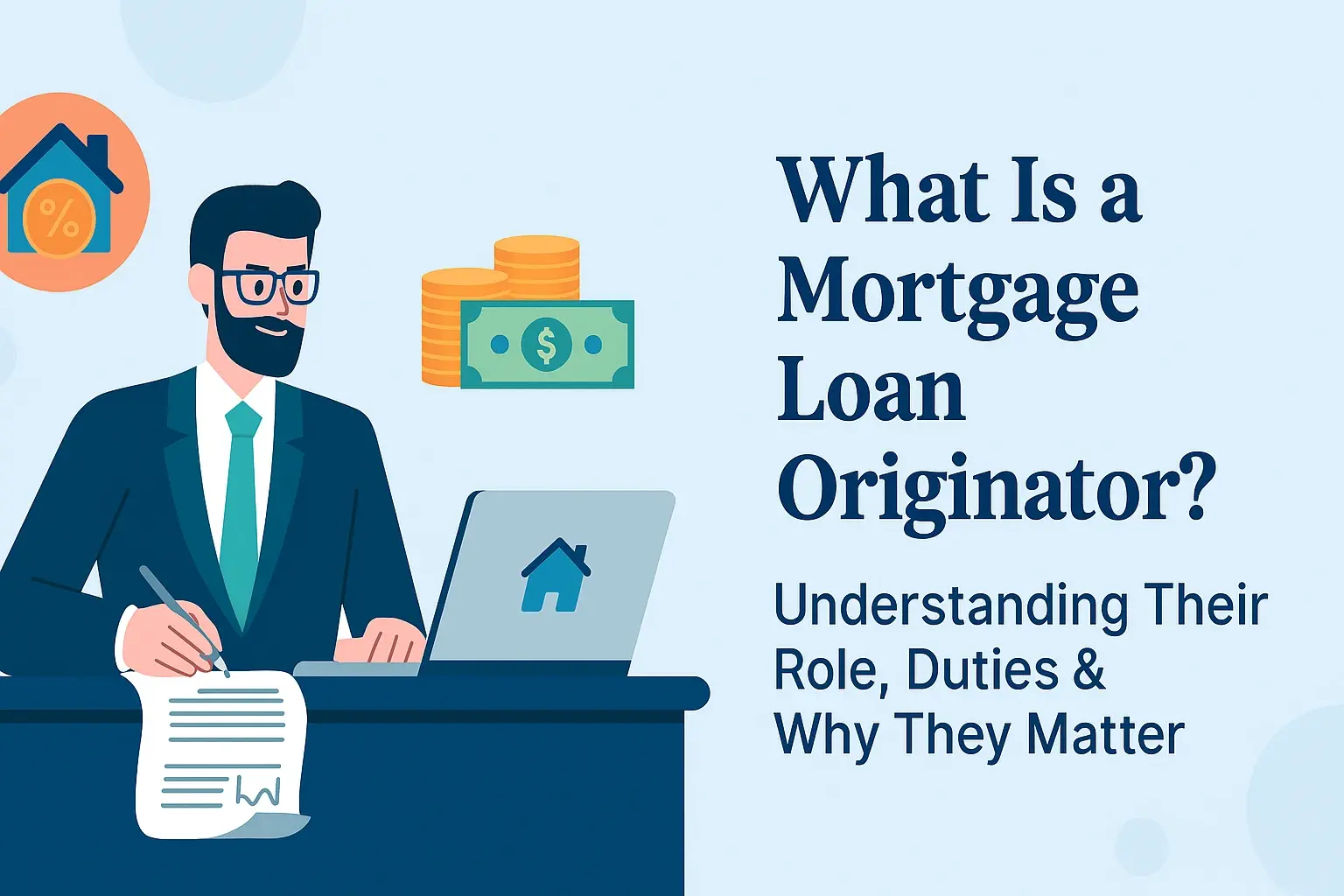-
Posted on: 04 Feb 2025

-
Navigating the world of 'buy now, pay later' (BNPL) services like Klarna can be complex, especially concerning your credit score. This guide demystifies Klarna's impact, explaining how responsible use can be beneficial and how missteps can affect your financial standing. Understand the nuances to manage your credit effectively.
What is Klarna and How Does it Work?
Klarna is a Swedish fintech company that offers a range of payment solutions for online and in-store purchases. Its most popular service, often referred to as "Pay in 4" or "Pay in 30 days," allows consumers to split their purchases into smaller, interest-free installments. For example, a customer might pay for a £100 item by paying £25 immediately, with the remaining £75 split into three further interest-free payments, typically due every two weeks. Klarna also offers longer-term financing options, which may involve interest charges and a more thorough credit check.
The core appeal of Klarna lies in its convenience and perceived affordability. It allows shoppers to acquire goods immediately without the upfront cost, spreading the financial burden over a manageable period. This model has seen explosive growth, particularly among younger demographics who may have limited access to traditional credit or prefer the flexibility BNPL offers. In 2025, Klarna continues to be a dominant player in this rapidly evolving market, constantly innovating its payment solutions to cater to a global consumer base.
When you use Klarna, you are essentially entering into a short-term credit agreement. Klarna pays the merchant upfront, and you then repay Klarna according to the agreed-upon schedule. The terms of these agreements vary. The "Pay in 4" option is generally interest-free and does not typically involve a hard credit check at the point of sale, making it accessible. However, Klarna's longer-term financing options, such as their "Slice it" product, which allows for longer repayment periods (e.g., 6, 12, or 24 months), often do involve a credit check and may accrue interest. Understanding these distinctions is crucial when considering the impact on your credit score.
The ease of use has contributed to Klarna's widespread adoption. The application process is usually quick, often requiring just basic personal information and a linked payment method. This seamless integration into the checkout process makes it an attractive alternative to traditional credit cards for many consumers. However, this very accessibility can also be a double-edged sword, as it might encourage overspending if not managed carefully. The financial implications, particularly concerning credit reporting, are a significant aspect that consumers must be aware of.
In 2025, the BNPL market is more mature than ever, with regulatory bodies worldwide paying closer attention to consumer protection and credit reporting practices. Klarna, as one of the largest providers, is at the forefront of these discussions. Their reporting mechanisms and how they interact with credit bureaus are central to how consumers' financial behavior with these services is perceived by lenders.
Klarna's Credit Score Reporting: The Key Factors
The way Klarna reports to credit bureaus is not uniform across all its products and regions. This is a critical point for consumers to understand. Generally, Klarna's "Pay in 4" or "Pay in 30 days" products, which are interest-free and typically do not involve a hard credit check, are less likely to be reported to major credit bureaus as a standard installment loan. However, this can vary. Some BNPL providers, including Klarna in certain circumstances or regions, may report missed payments or defaults.
On the other hand, Klarna's longer-term financing options, such as "Slice it" or other installment plans that extend beyond a few weeks and may involve interest, are more likely to be reported to credit bureaus. When these longer-term plans are used, Klarna may conduct a "hard" credit check to assess your creditworthiness. This hard check itself can have a small, temporary impact on your credit score. Subsequently, your repayment behavior on these longer-term plans will be reported to credit bureaus, much like a traditional loan or credit card account.
The reporting mechanism is a crucial element in how Klarna influences your credit score. If Klarna reports your account to credit bureaus, it will typically include information such as your payment history, the amount owed, and the age of the account. Responsible repayment of these longer-term Klarna plans can positively impact your credit score by demonstrating a pattern of timely payments, a key factor in credit scoring models. Conversely, late payments or defaults will negatively affect your score.
It's also important to note that the landscape of BNPL regulation and reporting is evolving. In 2025, there's an ongoing push for greater transparency and consistency in how BNPL services report to credit bureaus. Some jurisdictions are implementing rules that require BNPL providers to report to credit bureaus, ensuring that consumers' credit histories accurately reflect their use of these services. This means that even "Pay in 4" services might, in some regions, start to be reported, especially in cases of delinquency.
The specific credit bureaus Klarna reports to can also vary. In the UK, for instance, Klarna reports to Experian, Equifax, and TransUnion. In the US, the reporting practices can differ, and it's essential for users to check Klarna's terms and conditions specific to their region. Understanding which bureaus are involved helps consumers monitor their credit reports for any inaccuracies or unexpected entries related to their Klarna usage.
The credit utilization ratio is another factor to consider, though it primarily applies to revolving credit like credit cards. For installment plans, the impact is more about the payment history. However, if Klarna offers a revolving line of credit for larger purchases, then the amount you draw down against that limit could affect your credit utilization ratio if it's reported.
In summary, the key factors influencing Klarna's impact on your credit score are:
- The type of Klarna product used (e.g., Pay in 4 vs. longer-term financing).
- Whether Klarna performs a hard credit check.
- Whether Klarna reports your account activity to credit bureaus.
- Your repayment behavior (on-time vs. late payments).
- The specific credit bureaus Klarna reports to.
- Evolving regulatory requirements in 2025.
By understanding these elements, consumers can make informed decisions about using Klarna and manage their credit effectively.
How Klarna Directly Impacts Your Credit Score
Klarna's influence on your credit score can be direct and significant, primarily through its reporting of longer-term financing agreements to credit bureaus. When you opt for Klarna's installment plans that extend over several months (e.g., "Slice it" or similar products), these are often treated by credit bureaus like traditional loans or credit accounts. Here's a breakdown of the direct impacts:
1. Hard Credit Checks: For Klarna's longer-term financing options, a hard credit check is typically performed. This involves Klarna requesting a detailed report from one or more credit bureaus to assess your creditworthiness. A hard credit check can cause a small, temporary dip in your credit score, usually by a few points. While a single hard check is unlikely to cause major damage, multiple hard checks within a short period can signal to lenders that you might be overextending yourself financially, potentially lowering your score more significantly.
2. Payment History: This is arguably the most crucial factor in your credit score. If your Klarna installment plan is reported to credit bureaus, your payment history will be a primary determinant of its impact.
- On-time payments: Consistently making your Klarna payments on or before the due date builds a positive payment history. This demonstrates to lenders that you are a reliable borrower, which can gradually improve your credit score over time. This positive reporting is akin to paying off a personal loan or credit card responsibly.
- Late payments: Missing a payment or paying late can have a detrimental effect. Credit bureaus record these late payments, and they can significantly lower your credit score. The longer the delay and the more frequent the late payments, the more severe the damage. A late payment can remain on your credit report for up to seven years, continuing to affect your score.
- Defaults: Failing to make payments altogether (defaulting) is the most damaging scenario. This will severely impact your credit score and can lead to Klarna pursuing debt collection, further negative reporting, and potential legal action.
3. Credit Utilization (Less Common for Installment Plans): While less common for typical "Pay in 4" or fixed installment plans, if Klarna offers a revolving credit line that you can draw from, then your credit utilization ratio could be affected. Credit utilization is the amount of credit you're using compared to your total available credit. A high utilization ratio (generally above 30%) can negatively impact your score. However, for most Klarna installment products, this is not a primary concern as they are structured as fixed repayment loans.
4. New Credit Accounts: Each new credit account you open can have a minor impact on your credit score. If Klarna's longer-term financing is reported as a new account, it contributes to the "new credit" or "credit mix" factor in your score. While not as impactful as payment history, opening too many new accounts in a short period can sometimes lower your score.
5. Account Age: The length of time your credit accounts have been open is another factor. As Klarna installment plans age and are paid off responsibly, they contribute positively to the average age of your credit accounts, which can benefit your score.
Important Distinction: "Pay in 4" vs. Longer-Term Plans
It is crucial to reiterate the difference in reporting for Klarna's various products. In 2025, many "Pay in 4" services are designed to avoid reporting to credit bureaus unless there is a default. This means that using "Pay in 4" responsibly might not actively build your credit history in the same way as a traditional credit card or a longer-term loan. However, irresponsible use (missing payments) can still lead to negative reporting and damage your credit score. For longer-term financing options, the reporting is more comprehensive and directly impacts your credit file with both positive and negative information.
Example Scenario:
Imagine Sarah uses Klarna's "Pay in 4" for a £200 purchase. She makes her four £50 payments on time. If this specific "Pay in 4" product is not reported to credit bureaus, it won't actively boost her score, but it also won't harm it. However, if she uses Klarna's "Slice it" for a £1000 purchase, repayable over 12 months with interest, this will likely involve a hard credit check and her payment history will be reported. If she pays on time for 12 months, this positive activity will be reflected on her credit report, potentially improving her score. If she misses payments, her score will suffer.
In essence, Klarna's direct impact hinges on which product you use and how it's reported. For longer-term, interest-bearing products, responsible usage is a powerful tool for credit building, while irresponsible usage can lead to significant damage. For short-term, interest-free plans, the impact is often more about avoiding negative consequences rather than actively building credit.
Maximizing the Benefits: Responsible Klarna Usage
Leveraging Klarna's services responsibly can be a strategic move for managing your finances and, in some cases, even improving your creditworthiness. The key lies in understanding the terms, planning your payments, and integrating Klarna into your budget rather than treating it as an extension of your income. Here’s how to maximize the benefits:
1. Treat it Like a Loan, Not Free Money: This is the golden rule. Even the interest-free "Pay in 4" options are short-term credit. Before making a purchase, ask yourself: "Can I afford to pay this entire amount back within the specified timeframe?" If the answer is uncertain, it's wise to reconsider the purchase or explore alternative payment methods.
2. Budgeting is Paramount: Integrate your Klarna payments into your monthly budget. Note down the due dates for each installment and ensure you have the funds available. Use calendar reminders or budgeting apps to keep track. This proactive approach prevents accidental late payments.
3. Understand the Terms and Conditions: Before completing a purchase with Klarna, especially for longer-term financing, carefully read the terms. Pay attention to:
- Interest rates: Are there any? If so, how much are they?
- Fees: Are there late payment fees, account servicing fees, or other charges?
- Repayment schedule: Clearly understand when each installment is due.
- Credit reporting: Does this specific product get reported to credit bureaus? If so, how?
4. Use it for Planned Purchases: Klarna is ideal for purchases you've already budgeted for and need to spread out over a short period. For example, if you need a new appliance or furniture and have saved up most of the cost, Klarna can help bridge the gap without incurring interest, provided you can meet the repayment schedule.
5. Leverage Longer-Term Financing for Credit Building (Carefully): If you are looking to build or improve your credit score, and you are confident in your ability to repay, Klarna's longer-term financing options can be beneficial. By making consistent, on-time payments on a reported installment loan, you demonstrate financial responsibility to credit bureaus. This can positively impact your credit score over time. However, this strategy requires discipline and a thorough understanding of your financial capacity.
6. Avoid Overspending: The ease of Klarna can be tempting. Resist the urge to make impulse purchases simply because you can split the cost. Stick to your shopping list and your budget. Overspending can quickly lead to a cycle of debt and missed payments.
7. Set Up Automatic Payments (with caution): For products that are reported to credit bureaus, setting up automatic payments can be a lifesaver. Ensure your linked bank account has sufficient funds to cover the installments to avoid overdraft fees and missed payments. However, if you prefer manual control, ensure you are diligent with manual payments.
8. Monitor Your Klarna Account: Regularly check your Klarna account to ensure all payments are accounted for and that there are no discrepancies. This also helps you stay aware of upcoming payment due dates.
9. Combine with Other Financial Goals: If you're using Klarna for a planned purchase, ensure it aligns with your broader financial goals, such as saving for a down payment or paying off other debts. Don't let Klarna payments derail your other financial objectives.
10. Understand the Impact on Your Credit Report (for reported products): If Klarna reports to your credit bureaus, know that responsible use builds a positive history. Conversely, even a single missed payment on a reported account can have a negative impact. Ensure you understand the reporting practices for the specific Klarna product you are using.
Example of Responsible Use:
Consider Alex, who needs a new laptop for work costing £800. He has £600 saved and sees Klarna offers a "Pay in 4" option. He calculates that he can comfortably pay the remaining £200 over the next four weeks. He sets reminders and ensures the funds are in his account for each payment. This allows him to get the laptop he needs without delaying his work, and by paying on time, he avoids any negative impact on his credit. If he had opted for a longer-term Klarna plan, he would have ensured it was reported and diligently made payments to build his credit history.
By adopting these practices, you can harness the convenience of Klarna while safeguarding your financial health and credit score. It's about using the tool wisely, not letting the tool use you.
Avoiding the Pitfalls: What to Watch Out For
While Klarna offers convenience, several pitfalls can negatively impact your finances and credit score if not navigated carefully. Being aware of these potential issues is the first step toward avoiding them. In 2025, as BNPL services become more integrated into the retail landscape, these risks remain pertinent.
1. The Illusion of "Free Money": The most significant pitfall is the perception that Klarna's interest-free options are truly free. While the interest may be zero, the underlying agreement is still a form of credit. Failing to repay on time can lead to substantial late fees and negative credit reporting, making the purchase far more expensive than anticipated.
2. Overspending and Impulse Purchases: The ease of splitting payments can encourage impulse buying. Consumers may purchase items they don't truly need or can't genuinely afford over the repayment period. This can lead to accumulating debt across multiple BNPL services, making it difficult to track and manage.
3. Accumulating Multiple BNPL Accounts: Using Klarna for one purchase is manageable. However, using it for multiple purchases across different retailers, potentially with different BNPL providers, can quickly become overwhelming. Tracking due dates, repayment amounts, and the overall debt can become a significant challenge, increasing the risk of missed payments.
4. Late Payment Fees and Penalties: If you miss a payment on a Klarna installment plan, you will likely incur late fees. These fees can add up quickly, increasing the total cost of your purchase. For longer-term financing, these late payments are also reported to credit bureaus, damaging your credit score.
5. Negative Credit Reporting: This is a critical pitfall. While not all Klarna products are reported to credit bureaus, many longer-term financing options are. Missed payments, defaults, or even excessive use of credit lines (if applicable) can be reported, leading to a significant drop in your credit score. This can make it harder and more expensive to obtain future loans, mortgages, or even rent an apartment.
6. Impact on Credit Score from Hard Checks: For Klarna products that require a hard credit check, multiple applications in a short period can negatively affect your score. This is particularly true if you are applying for other forms of credit concurrently.
7. Difficulty in Managing Returns and Refunds: Returning an item purchased with Klarna can sometimes be more complex than returning an item bought with a credit card. While Klarna aims to simplify this, issues can arise, especially if the refund process with the merchant is slow. You might still be obligated to make payments on the item while waiting for your refund, which can strain your cash flow.
8. Lack of Consumer Protections (compared to credit cards): In some regions, BNPL services may not offer the same level of consumer protection as traditional credit cards, such as Section 75 protection in the UK for purchases over a certain amount. This means that if a merchant goes out of business or fails to deliver goods, you might have less recourse through Klarna compared to a credit card provider.
9. Debt Spiral: For individuals with pre-existing financial difficulties, Klarna can exacerbate the problem. Relying on BNPL to manage essential purchases can create a cycle where you're constantly deferring payments, leading to an unsustainable debt burden.
10. Misunderstanding Reporting Practices: A common pitfall is assuming that all Klarna usage is invisible to credit bureaus. While some short-term products might be, relying on this assumption can be dangerous. If a product is reported and you miss payments, the negative consequences can be severe and unexpected.
How to Mitigate These Risks:
- Always check your credit report: Regularly review your credit report from major bureaus to ensure accuracy and to see how Klarna (if reported) is affecting your score.
- Set up payment reminders: Use your phone, calendar, or budgeting apps to remind you of upcoming Klarna payment due dates.
- Prioritize essential purchases: Use Klarna only for necessities or planned purchases, not for discretionary spending.
- Avoid using multiple BNPL services simultaneously: Stick to one or two providers at most to keep your payment obligations manageable.
- Read the fine print: Always understand the terms and conditions before agreeing to any Klarna purchase.
- Have an emergency fund: A small emergency fund can help cover unexpected expenses or bridge gaps if you face a temporary cash flow issue, preventing you from missing Klarna payments.
By being vigilant and proactive, consumers can avoid the common pitfalls associated with Klarna and other BNPL services, ensuring they use these tools to their advantage rather than falling victim to their potential downsides.
Klarna vs. Traditional Credit Cards: A Comparative Look
The rise of Buy Now, Pay Later (BNPL) services like Klarna has presented consumers with new ways to manage purchases, often drawing comparisons to traditional credit cards. While both offer deferred payment options, their structures, reporting mechanisms, and impacts on credit scores differ significantly. Understanding these distinctions is crucial for making informed financial decisions in 2025.
1. Structure and Interest:
- Klarna: Primarily offers interest-free installment plans ("Pay in 4," "Pay in 30 days") for shorter periods. Longer-term financing ("Slice it") may involve interest. The focus is on splitting a single purchase into fixed, manageable payments.
- Credit Cards: Typically offer a revolving line of credit. Purchases accrue interest unless paid in full by the due date of the statement. They are designed for ongoing use and managing a balance over time, albeit with interest costs.
2. Credit Checks and Reporting:
- Klarna: "Pay in 4" options often involve a soft credit check (which doesn't impact your score) and may not be reported to credit bureaus unless there's a default. Longer-term financing usually involves a hard credit check and is reported to bureaus, similar to a loan.
- Credit Cards: Require a hard credit check upon application, impacting your score. All activity (spending, payments, balances) is consistently reported to credit bureaus, influencing your credit score directly.
3. Impact on Credit Score:
- Klarna: Responsible use of longer-term, reported Klarna plans can build credit history through on-time payments. Irresponsible use (late payments, defaults) on reported accounts can significantly damage your score. "Pay in 4" has a less direct impact, mainly concerning avoiding negative reporting.
- Credit Cards: Consistent, on-time payments and maintaining low credit utilization build a strong credit history. High utilization, late payments, or defaults severely damage your score. Credit cards offer more consistent opportunities to actively build credit.
4. Consumer Protections:
- Klarna: Protections can vary by region and product. While Klarna facilitates returns, the recourse might not be as robust as credit card chargebacks in all situations.
- Credit Cards: Often offer stronger consumer protections, such as chargebacks for goods not received or not as described, and protections under laws like the Fair Credit Billing Act (US) or Section 75 (UK).
5. Fees:
- Klarna: Primarily charges late fees for missed payments. Interest is usually only applicable to longer-term financing options.
- Credit Cards: Can have annual fees, late payment fees, over-limit fees, balance transfer fees, and cash advance fees, in addition to interest charges on outstanding balances.
6. Use Cases:
- Klarna: Ideal for spreading the cost of a specific, planned purchase over a short, interest-free period, provided you can meet the repayment terms. It can be a useful tool for managing cash flow for individual items.
- Credit Cards: Better suited for ongoing spending, earning rewards (cashback, points), building a long-term credit history, and for purchases where robust consumer protection is desired. They offer flexibility for managing a revolving balance, though this comes with interest costs.
Comparison Table:
Feature Klarna (General) Traditional Credit Cards Primary Structure Interest-free installments (short-term) or interest-bearing loans (long-term) Revolving line of credit with interest Interest Often 0% for short-term plans; may apply to longer-term financing Applies to outstanding balances not paid in full by due date Credit Check (Application) Soft check for "Pay in 4"; Hard check for longer-term financing Hard check Credit Reporting Varies: often no reporting for "Pay in 4" unless default; reported for longer-term financing Consistent reporting of all activity Impact on Credit Score Positive via reported long-term plans; Negative via missed payments on reported plans. Minimal direct impact for non-reported plans. Significant positive or negative impact based on payment history and utilization. Consumer Protections Varies; generally less robust than credit cards for disputes. Stronger protections (e.g., chargebacks, fraud liability). Fees Primarily late fees. Annual fees, late fees, interest, etc. Which is Better?
Neither Klarna nor credit cards are inherently "better"; they serve different purposes. Klarna excels for managing the cost of a specific, planned purchase over a short, interest-free period. Credit cards are more versatile for ongoing spending, building a comprehensive credit history, and offering broader financial protections. For credit building, consistently using and paying off a credit card responsibly is generally more effective than relying solely on Klarna's "Pay in 4" options.
In 2025, consumers should consider their individual financial habits and goals. If you struggle with impulse control or managing revolving debt, Klarna's fixed installments might offer a safer structure for specific purchases. If you aim to build a robust credit profile and benefit from rewards and protections, a credit card remains a cornerstone of financial management.
Monitoring Your Credit with Klarna in 2025
In 2025, actively monitoring your credit is more important than ever, especially with the increasing prevalence of "buy now, pay later" services like Klarna. Understanding how these services interact with your credit report allows you to catch errors, identify potential issues, and ensure your financial behavior is accurately reflected. Here’s how to monitor your credit in relation to Klarna:
1. Understand Klarna's Reporting Practices:
The first step is to know whether and how your Klarna usage is reported to credit bureaus. As discussed, this varies by product and region. For longer-term financing options that are reported, your payment history will appear on your credit report just like any other loan. For "Pay in 4" services, reporting is often limited to defaults, but this can change with evolving regulations.
2. Obtain Your Credit Reports:
You are entitled to free credit reports from the major credit bureaus annually. In the US, you can get these from AnnualCreditReport.com. In the UK, you can access reports from Experian, Equifax, and TransUnion, often through free services or paid subscriptions. In other regions, similar services are available.
3. Review Your Klarna Information:
When you receive your credit report, meticulously review the sections detailing your credit accounts. Look for:
- Account Status: Ensure your Klarna account (if reported) is listed correctly, showing the right balance and status (e.g., "current," "paid").
- Payment History: Check for any reported late payments or defaults that you don't recognize. If you've always paid on time, a negative mark is an error that needs immediate correction.
- Account Age: Verify that the age of the account is reported accurately.
- Credit Limit/Amount Owed: Ensure these figures are correct, especially if it's a longer-term financing product.
4. Monitor for Unrecognized Accounts:
Be vigilant for any Klarna accounts listed on your credit report that you did not open. This could be a sign of identity theft. Report any unauthorized accounts immediately to the credit bureau and Klarna.
5. Utilize Credit Monitoring Services:
Many services offer ongoing credit monitoring. These services alert you to significant changes on your credit report, such as new accounts, hard inquiries, or changes in your credit score. Some even offer tools to dispute errors. While some services have a fee, they can provide peace of mind and timely alerts, especially if you use multiple BNPL services.
6. Understand the Impact of "Pay in 4" on Your Report:
Even if your "Pay in 4" usage isn't actively building your credit, it's crucial to monitor for any negative reporting. If you miss payments on these, Klarna may eventually report it to credit bureaus, and you need to be aware of this. Your credit report is the definitive record of your financial standing.
7. Dispute Errors Promptly:
If you find any inaccuracies on your credit report related to Klarna, act quickly. Contact the credit bureau directly to initiate a dispute. Provide all necessary documentation, such as payment confirmations, to support your claim. The credit bureaus are required to investigate these disputes.
8. Connect Klarna to Your Financial Overview:
Integrate your Klarna payment obligations into your overall financial management. Use budgeting apps or spreadsheets that allow you to track all your debts and payment due dates, including Klarna. This holistic view helps prevent missed payments that could lead to negative credit reporting.
9. Stay Informed About Regulatory Changes:
The regulatory landscape for BNPL services is constantly evolving. In 2025, expect continued discussions and potential new rules regarding credit reporting. Staying informed ensures you understand how your usage might be affected by future changes.
Example of Monitoring:
Maria uses Klarna for a few smaller purchases throughout the year. She checks her credit report annually. She notices a Klarna account listed that she doesn't recognize. Upon investigation, she realizes it's for a purchase she made six months ago but had forgotten about, and it's marked as "past due." This prompts her to immediately contact Klarna, pay the outstanding balance and late fees, and then dispute the "past due" status with the credit bureau, providing proof of her immediate payment. This proactive monitoring saved her from further credit score damage.
By consistently monitoring your credit reports and understanding how Klarna fits into that picture, you can maintain a healthy financial profile and make informed decisions about your spending and borrowing habits.
When to Seek Professional Advice
While Klarna offers a convenient payment solution, there are instances where seeking professional financial advice is not just beneficial but essential. If you find yourself struggling with debt, making consistent late payments, or feeling overwhelmed by your financial obligations, reaching out to experts can provide clarity and a path forward. In 2025, with the complex interplay of BNPL, credit scores, and personal finance, professional guidance is invaluable.
1. Persistent Difficulty Making Payments:
If you are consistently finding it hard to meet your Klarna payment deadlines, even for the "Pay in 4" options, it's a strong indicator that your current spending habits are unsustainable. This suggests a deeper issue with budgeting or income that needs addressing. A financial advisor or credit counselor can help you create a realistic budget and identify areas where you can cut back.
2. Accumulating Significant Debt Across Multiple BNPL Services:
Using Klarna for one or two purchases is manageable. However, if you find yourself using Klarna, Afterpay, Affirm, and other BNPL services for numerous purchases, and the total debt is becoming unmanageable, it's a red flag. This fragmentation of debt can make it difficult to track and repay, leading to a debt spiral. A debt management professional can help consolidate these debts and create a repayment plan.
3. Negative Impact on Your Credit Score:
If you notice a significant drop in your credit score and suspect it's related to Klarna (due to missed payments on reported accounts) or other credit activities, a credit counselor can help you understand the reasons behind the drop. They can guide you on how to dispute errors on your credit report and strategies to rebuild your credit score effectively.
4. Experiencing Financial Hardship or Unexpected Events:
Job loss, unexpected medical bills, or other unforeseen financial emergencies can disrupt your ability to make payments. In such situations, speaking with a financial advisor can help you explore options like negotiating payment plans with Klarna, accessing emergency funds, or adjusting your budget to cope with the hardship.
5. Planning for Major Financial Goals:
If you are planning for significant financial milestones like buying a home, starting a business, or saving for retirement, understanding how your use of BNPL services impacts your overall financial health and creditworthiness is crucial. A financial advisor can help you integrate responsible BNPL usage (if any) into a broader financial plan that supports your long-term goals.
6. Uncertainty About Credit Reporting and Its Implications:
The nuances of BNPL credit reporting can be confusing. If you are unsure about how your Klarna usage affects your credit score, or if you need clarification on reading your credit report, a credit counselor or financial advisor can provide expert insights.
Where to Find Help:
- Non-profit Credit Counseling Agencies: Organizations like the National Foundation for Credit Counseling (NFCC) in the US or similar bodies in other countries offer free or low-cost advice on budgeting, debt management, and credit repair.
- Financial Advisors: For comprehensive financial planning, including investment, retirement, and debt management strategies, a certified financial advisor can be invaluable.
- Debt Management Companies: These companies can negotiate with creditors on your behalf to consolidate your debts into a single monthly payment, often at a reduced interest rate.
- Citizens Advice Bureaux (UK): Offer free, impartial advice on a wide range of issues, including debt and money management.
Seeking professional help is a sign of financial maturity, not weakness. It demonstrates a commitment to taking control of your finances and building a secure future. Don't hesitate to reach out if you feel overwhelmed or uncertain about your financial situation, especially concerning services like Klarna that can have a significant impact on your credit health.
In conclusion, understanding Klarna's influence on your credit score requires a nuanced approach. While its "Pay in 4" options may offer short-term, interest-free flexibility, their reporting practices are often minimal unless defaults occur. However, Klarna's longer-term financing products function more like traditional loans, with hard credit checks and consistent reporting of payment history. Responsible usage, diligent budgeting, and careful monitoring of your credit reports are paramount. By staying informed and proactive, you can leverage Klarna's convenience without jeopardizing your financial well-being or creditworthiness. Always prioritize making payments on time and understanding the specific terms of the Klarna product you are using to ensure a positive financial outcome.











